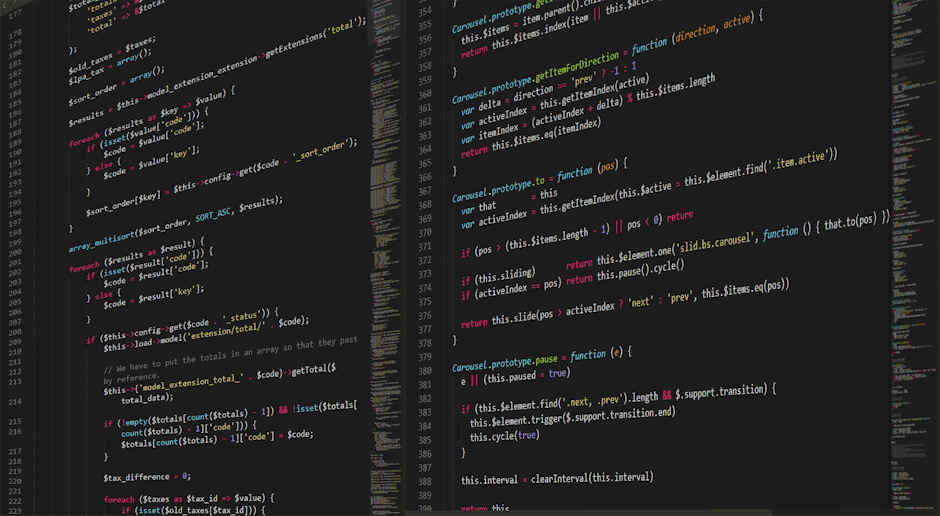
So, you’re sitting there, maybe thinking about 2025 and what kind of cool stuff you could be doing, and mobile app development pops into your head. It’s a field that, well, it just keeps moving, doesn’t it? Lots of people are wondering how to get into it, like, what’s the real path? It’s not always super clear when you first start looking, and there’s a lot of chatter out there.
You might be asking yourself, “Can I actually do this?” And the truth is, a lot of folks do. It’s not some secret club you can’t join. It just takes a bit of elbow grease, and, you know, knowing where to put that effort. We’re going to talk about how you get from zero to making apps, the kind of things you’ll pick up, and what it generally looks like in this ever-changing tech world. It’s a journey, for sure, and we’ll walk through some of the steps you can usually take.
Getting Started: What You Actually Need to Know (and Learn)
Okay, first things first, you’re going to need to get comfortable with computers, like, beyond just browsing the internet or checking your social media. This means understanding files, folders, and how programs generally work on a basic level. It’s foundational stuff, the groundwork, really. You don’t need to be a wizard, but just not afraid to poke around.
Then, there’s a different way of thinking that comes with programming. It’s all about breaking big problems into smaller, more manageable parts. This problem-solving mindset is considered to be super important. It’s probably more important than knowing a specific coding language right from the start, truthfully.
Next up, you have to sort of pick a path, at least to begin with. Do you want to build apps for iPhones and iPads? That’s iOS. Or for Android phones and tablets? That’s Android. Or maybe you want to try and make one app that works on both? That’s what they call cross-platform development. Each has its own ways of doing things.
For iOS, people typically learn Swift, which is Apple’s own language for making their apps. For Android, it’s normally Kotlin, a pretty modern language that Google really likes now. If you go cross-platform, you might look at things like React Native or Flutter. Don’t worry too much about picking the “perfect” one immediately, just pick one to start.
The idea here is to just, you know, dive in. Pick a language, maybe a platform you’re most interested in using yourself. Get some basic courses online. There are tons of free and paid options out there. It’s important to just start typing some simple code, seeing what happens. That’s how you really begin to understand.
Making Things: Hands-On Practice is the Real Teacher
Once you’ve got a little bit of a handle on a programming language, the very best thing you can do is start making stuff. I mean, small stuff at first, nothing too fancy. Maybe an app that just says “Hello World” in different ways. Or one that does a simple calculation. These little projects help you put all that theory into actual use.
A good way to learn is by copying. Find a simple app tutorial online, or even an open-source app, and try to build it yourself, line by line. Don’t just paste the code, though. Type it out, see what each bit does, and try to change little things. See if you can, like, put your own twist on it, even if it’s just changing a button’s color.
This kind of active learning, where you’re always trying to build something, is what makes the knowledge really stick. You’ll run into errors, believe me. Lots of errors. And figuring out how to fix those errors, that’s where a lot of the actual learning happens. It’s not always fun, but it helps a lot.
There are so many good resources for this. Online documentation, coding forums where people ask questions (and get answers!), YouTube channels with coding lessons. You don’t have to spend a fortune, honestly. A lot of good content is just out there for the taking if you’re willing to go find it and put in the time.
And hey, if you’re looking for places where actual app development happens, sometimes it’s good to see what real companies are doing. If you happen to be in a big city, say like Houston, you might find some places that do professional mobile app development Houston style, like firms always making new apps or offering specific services. Seeing how others work can be pretty motivating.
What Tools and Tech Are People Using These Days? (2025 Edition)
Alright, moving past the absolute basics, let’s talk about some of the tools and technologies that are generally popular right now, and which are likely to stay relevant in 2025. You don’t need to learn all of them, but it gives you an idea of what’s out there. This stuff helps you build real, functional apps.
For making native apps, meaning specific to one type of phone, Swift is still the go-to for iOS development. It’s pretty powerful and works well within Apple’s ecosystem. For Android, Kotlin is definitely what most new projects are using; it’s a safer, more concise language than the older Java. Knowing one of these well is a great start.
But a lot of people are also using cross-platform things. React Native, which uses JavaScript, is a very common choice for building apps that can run on both iOS and Android from one codebase. Flutter, from Google, is another big player here, using a language called Dart. These can save a lot of development time, which is usually a big deal for companies.
It’s not just about the app on the phone, though. Many apps need a “backend,” which is the server part that handles things like user accounts, data storage, and sending notifications. So, having some knowledge of backend systems, like using Node.js, Python with Django or Flask, or even something like Firebase for simpler setups, is pretty useful.
And databases. Your app needs somewhere to put all its information, right? Learning about SQL databases (like PostgreSQL or MySQL) or NoSQL ones (like MongoDB) will be a big plus. Understanding how your app talks to these through APIs is also a necessary skill to get good at. It connects everything together.
Finally, version control is something you’ll use every single day. Git is the standard for this. It helps you keep track of all the changes you make to your code, work with other people on the same project, and easily go back if you mess something up. It’s one of those things that seems tricky at first but becomes second nature.
Finding Work and Keeping Up: Your Developer Life
So you’ve learned some languages, built a few little things, maybe you’re feeling a bit more confident. Now, how do you actually get a job or show off what you can do? This part is often about showcasing your work and connecting with others in the field. It’s definitely a different kind of skill to acquire.
A portfolio is, honestly, probably the single most important thing. This isn’t just a list of things you’ve done. It’s a collection of the apps you’ve built, even small ones, that you can show to potential employers. Make sure they work, look decent, and that you can talk about how you built them and what challenges you overcame.
Put your projects on GitHub or a similar platform. This lets people see your code, how you structure your projects, and your commitment to making things. It’s like an online resume for your code. Employers often peek at this stuff to get a feel for your capabilities, so make it presentable.
Networking, you know, talking to people, is another big one. Go to local meetups, join online communities, connect with developers on platforms like LinkedIn. Sometimes the best opportunities don’t come from job boards but from someone you met who knows someone who’s looking for exactly your kind of skill set.
And the tech world, it never stops changing. New tools pop up, old ones get updated, and the way people do things can shift pretty fast. So, a big part of being a mobile app developer is just, like, constantly learning. Read blogs, watch conference talks, try out new beta features. It’s a never-ending class, really.
Keep an eye on what’s new in phone hardware, operating system updates, and even new app ideas people are trying out. This kind of awareness helps you stay relevant and gives you ideas for new projects. It’s about being generally curious about the whole field, not just your little corner of it.
So, Is It Really for You? (Thinking Ahead)
Becoming a mobile app developer isn’t just about the coding part. It’s also about, well, whether you enjoy the day-to-day of it. There are definite upsides, and some bits that can be a bit tricky, which is just part of any job, really. You have to be okay with both sides of that coin.
One of the really good parts is that you get to build things that people actually use. Seeing your app on someone’s phone, or hearing that it made someone’s life a little bit easier, that’s a pretty cool feeling. It gives you a sense of purpose, normally, which is nice.
On the other hand, it can be a bit frustrating sometimes. You’ll hit walls, things won’t work the way you expect, and debugging can feel like trying to find a needle in a haystack. You’ve got to have a good amount of patience and a willingness to just keep trying, even when it feels like nothing is going right.
It’s a job where you’re always, always learning something new. That can be exciting for some people, but for others, it might feel like a lot. The technology just keeps moving. So if you like to stay still, this might not be the best fit. But if you like new challenges, then you’re probably in a good spot.
In 2025, mobile apps are still everywhere, and they’re not going anywhere. More and more businesses want their own apps, and people always want new ways to connect or get things done on their phones. So, the demand for people who can make these apps is still generally quite strong, which is a good sign if you’re thinking of joining the field.
It’s a pretty rewarding career if you like solving puzzles, making things, and don’t mind a bit of a challenge. You get to be a part of creating the digital world that so many of us rely on every day. It’s a field that lets you be creative and technical all at once, which is kind of special, really.
To sum it up, getting into mobile app development in 2025 is definitely something you can do. Start with the basics, get hands-on with projects, learn the current tools, and always keep that learning hat on. It’s a path that requires dedication, sure, but it opens up a lot of really interesting possibilities for what you can create. Just start building, even if it’s small, and you’ll be on your way.
FAQ: How Do I Become a Mobile App Developer?
Q1: Do I need a computer science degree to become a mobile app developer?
No, you normally don’t need a specific degree, not really. Many successful mobile app developers are self-taught or come from other backgrounds. What’s most important is showing what you can actually build, not just what degree you have.
Q2: What’s the first thing I should learn if I want to get into app development?
Generally, you should start with the basics of programming logic and then pick one platform (like iOS or Android) and its primary language (Swift for iOS, Kotlin for Android). Or, you could go with a cross-platform approach like Flutter or React Native to start.
Q3: How long does it usually take to become good enough to get a job as an app developer?
It varies a lot for everyone, but typically, if you’re putting in consistent effort, it might take anywhere from 6 months to a year, maybe more, to build up enough skills and a portfolio to land your first junior role. It’s not an overnight thing.
Q4: Can I learn mobile app development for free?
Yes, you absolutely can! There are tons of free resources out there: online courses, coding tutorials, documentation from Apple and Google, and a huge amount of YouTube videos. You just need to be good at finding them and staying motivated.
Q5: What kind of projects should I build for my portfolio when I’m just starting?
Start with simple, functional apps. Maybe a basic calculator, a to-do list, a weather app that pulls data from an online service, or a simple game. The key is to complete them, make them work well, and be able to talk about how you put them together.






